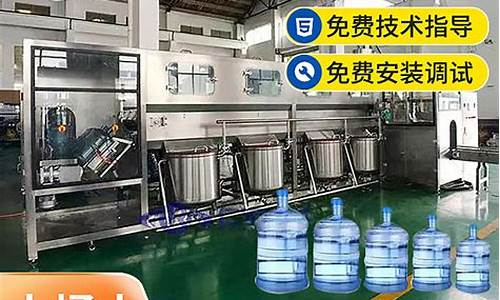In today's market, large-capacity water filling equipment plays a critical role in ensuring that high volumes of water are bottled efficiently and reliably. As industries and consumers alike demand more from water bottling solutions, understanding the performance of this equipment becomes essential. This article provides an in-depth analysis of large-capacity water filling equipment, highlighting its key features, operational efficiency, and the factors that influence its performance.
Key Features of Large-Capacity Water Filling Equipment
Large-capacity water filling equipment is designed to handle substantial volumes of water with precision. One of the main features of this equipment is its high-speed filling capability. Modern systems can fill thousands of bottles per hour, making them ideal for large-scale production environments. Another crucial feature is the automation level. Advanced filling machines come equipped with automated controls that minimize manual intervention, reduce human error, and increase overall efficiency.
Additionally, the equipment is built to accommodate various bottle sizes and shapes, offering flexibility in production. The filling nozzles are designed to handle different viscosities and types of liquids, ensuring that the filling process is consistent regardless of the water's characteristics. For quality assurance, many systems include advanced inspection mechanisms to detect and remove any defective bottles or contaminants.
Operational Efficiency and Benefits
The operational efficiency of large-capacity water filling equipment is largely influenced by its design and technological advancements. High-quality machines are engineered to maximize throughput while minimizing downtime. This efficiency is achieved through continuous monitoring and adjustments during the filling process, ensuring that each bottle is filled to the correct level and that the equipment operates smoothly.
Moreover, the integration of energy-efficient technologies contributes to cost savings and environmental benefits. For example, many systems use energy recovery systems to recycle heat and reduce power consumption. This not only lowers operational costs but also supports sustainable practices by reducing the overall environmental footprint.

Factors Influencing Equipment Performance
Several factors can impact the performance of large-capacity water filling equipment. First, the quality of the components used in the equipment plays a significant role. High-quality materials and precise engineering ensure durability and reliability, which in turn affect the machine's overall performance.
Second, regular maintenance is essential for keeping the equipment running at optimal levels. Scheduled maintenance and timely repairs help prevent breakdowns and extend the lifespan of the machinery. It's also important to consider the operating environment. Factors such as temperature, humidity, and cleanliness can influence the performance and longevity of the equipment.
Finally, operator training is crucial. Well-trained personnel can effectively manage the equipment, troubleshoot issues, and make necessary adjustments to maintain high performance. Investing in comprehensive training programs can lead to better operational outcomes and more efficient use of the equipment.
Conclusion
Large-capacity water filling equipment is an indispensable asset in the water bottling industry. Understanding its key features, operational efficiency, and the factors affecting its performance can help businesses optimize their production processes and achieve better results. By focusing on high-quality components, regular maintenance, and proper operator training, companies can ensure their equipment remains reliable and effective. This knowledge not only enhances operational efficiency but also contributes to the overall success of water bottling operations.






























